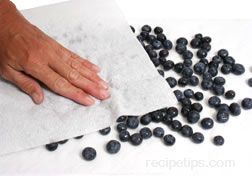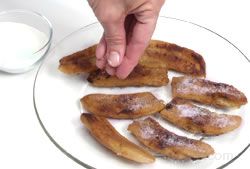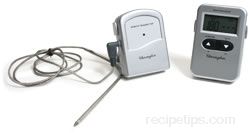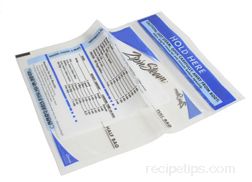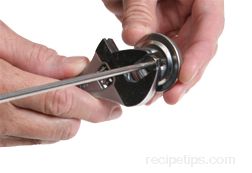The typical Meat or Cooking Thermometer is built with a probe that contains the thermometer sensor. The probe may range in length from several inches to more than 12 inches long, depending on the intended use. Small Button thermometers such as those used to gauge temperatures for steaks or other similar meats, will be very short in length while Meat Thermometers for grilling will be much longer in order to keep hands safely away from the heat of the grill. Unlike the temperature guages inserted prior to cooking, many instant-read thermometers, are inserted at the end of the cooking period, requiring only to be read when the food is almost finished cooking. Instant read thermometers are available as digital or open face dials with two key types available. The instant read Cooking Thermometer may be made with a display terminal mounted on the probe or as remote Cooking Thermometer with the display completely separate from the probe. Remote Cooking Thermometers are built with a probe, a transmitter connected to the probe and a receiver. The probe is inserted into the meat and the transmitter is placed outside of the oven area away from the heat. The receiver, which is wireless, is used to display the temperature as the food cooks. The receiver can travel with the chef as food is prepared allowing other tasks to be completed while the temperature is checked whenever desired on the wireless receiver. Any type of Cooking Thermometer generally works well, so it becomes a matter of personal preference when deciding on the best one to use.
When checking the temperature of the meat, insert the thermometer probe into the thickest part of the meat and as close to the center as possible. Avoid placing the thermometer probe on or near a bone, which will produce an inaccurate reading. It is often wise to take a reading from several locations or angles on the meat, since there may be hot spots that result in a higher temperature readings. Make sure the thermometer is kept away from heating elements such as the oven coils or the gas and charcoal heating elements so the reading accurately records the food heat and is not influenced by the excessive heat of the elements.








